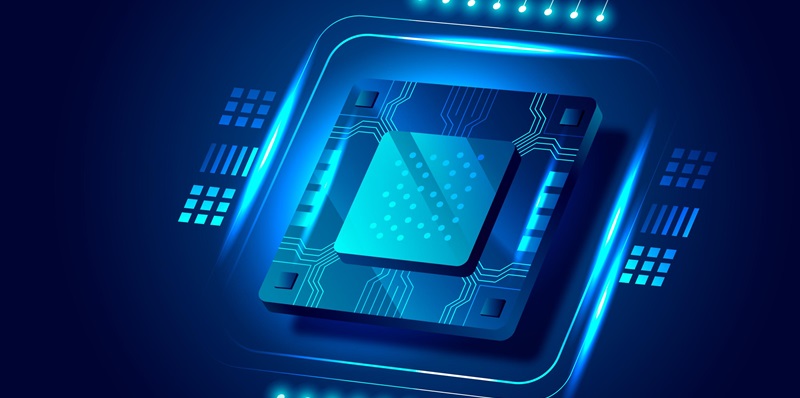AMD, a leading semiconductor company, has revealed its consideration of chiplet designs for its Ryzen APU family for laptops. However, despite the significant advantages offered by chiplet-based configurations, cost and power efficiency remain the main barriers. This article delves into the rise of chiplet-based designs, explores the challenges associated with maintaining power efficiency, discusses AMD’s perspective on chiplet adoption, compares monolithic structures to chiplets, examines the cost-effectiveness of chiplets in different market segments, highlights their implementation in high-end CPUs, speculates on future chiplet implementations, and recognizes AMD’s pioneering role in chiplet adoption.
The Rise of Chiplet-based Configurations
Chiplet-based configurations are rapidly emerging as the next big thing in the semiconductor industry. These designs involve separating different components of a processor into smaller “chiplets” that can be interconnected on a central die. The benefits of this approach include improved yield rates, enhanced modularity, and the ability to mix and match different chiplets for specific performance requirements.
Power Efficiency Challenges
While chiplet configurations offer numerous advantages, one area where they currently fall short is maintaining power efficiency. The interconnects between chiplets can lead to higher power consumption, affecting the overall efficiency of the design. This poses a significant challenge for AMD and other chip manufacturers seeking to optimize power consumption in their products.
AMD’s Perspective on Chiplet Adoption
AMD recognizes the potential of chiplet designs but believes that now may not be the best time to fully switch to chiplets for power-efficient chips. The company is carefully considering various factors, including cost-effectiveness and efficiency, before committing to widespread chiplet adoption. AMD aims to ensure that the shift to chiplet-based designs would bring tangible benefits to both consumers and the industry as a whole.
Monolithic Structures vs. Chiplets
Comparisons between monolithic structures and chiplets in the laptop market have shown that, thus far, monolithic structures tend to be more cost-effective and efficient. Monolithic designs allow for tighter integration of components, resulting in better power efficiency and potentially lower manufacturing costs. In contrast, chiplets introduce complexities in interconnects, contributing to increased power consumption and potentially higher production costs.
Cost-Effectiveness of Chiplets
As we delve deeper into different market segments, it becomes apparent that chiplets may not yield the same cost-effectiveness as a monolithic design, particularly in entry-level or mainstream laptops. The economies of scale and the specific demands of these segments must be taken into account when considering the viability of chiplets. However, chiplets have shown promising results in boosting performance and efficiency in high-end enthusiast-grade laptops.
Chiplets in High-End CPUs
In line with the advantages showcased in high-end desktop CPUs, AMD has begun adopting chiplets for its high-end Dragon Range CPUs, targeted at enthusiast-grade laptops. These chiplets enable enhanced performance, scalability, and flexibility in accommodating various processing units, allowing enthusiasts to achieve top-notch speeds and responsiveness in their laptops.
Future Chiplet Implementations
Looking ahead, it is expected that AMD will continue to utilize chiplet-based designs for its next-gen Strix Point (Halo) chips, set to launch next year. These chiplet implementations aim to leverage the benefits of modularity, scalability, and performance optimization across a range of applications, catering to the demanding needs of high-performance desktop and laptop users.
The Road Towards Mainstream Adoption
The full realization of chiplets in the mainstream laptop “Ryzen APU” segment shouldn’t be expected until 2026-2027. AMD, along with other chip manufacturers, is diligently working towards refining chiplet designs while addressing power efficiency concerns through new manufacturing processes, advanced interconnect technologies, and power management techniques. This ongoing research and development will pave the way for widespread adoption of chiplets in the future.
AMD’s Pioneering Role in Chiplet Adoption
AMD has been at the forefront of chiplet adoption, being the first to recognize their potential and bring them to mainstream and high-end users on both desktop and laptop platforms. By pioneering chiplet-based designs, AMD has spurred innovation and competition in the market, pushing the boundaries of performance, scalability, and modularity in the semiconductor industry.
AMD’s consideration of chiplet designs for its Ryzen APU family for laptops signifies the growing significance of this approach in the semiconductor industry. While facing challenges in terms of cost and power efficiency, chiplet configurations offer immense potential for enhancing performance, scalability, and flexibility. As advancements continue to address these challenges, chiplets are expected to revolutionize the laptop market, improving power efficiency, cost-effectiveness, and the overall user experience in the years to come.

